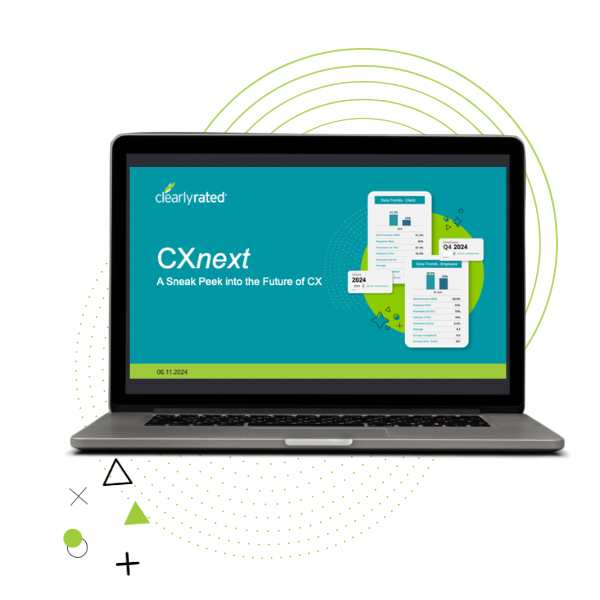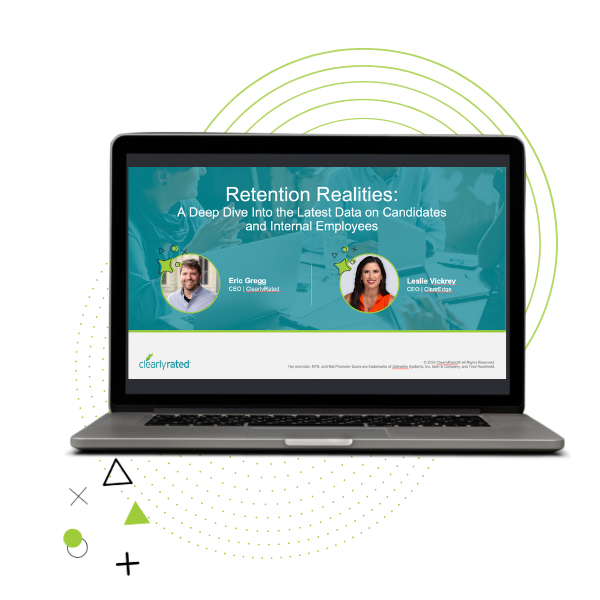These days it goes without saying: The pandemic and simultaneous social movements gave people a new perspective and reordered their priorities. For many people, work and career got knocked down a few rungs while flexibility, fulfillment, and inclusion moved up. Hence, the Great Resignation (or the Great Reshuffle, depending on how we look at it). Thankfully, the record-high quit rates we saw in 2021 and 2022 have slowed, as noted in the latest Bureau of Labor Statistics report. But as the dust settles, we’re still faced with increasingly high employee disengagement. Believe it or not, you can unlock powerful data by conducting an employee survey.
To engage and hold onto your employees, you must nurture an atmosphere that fosters true inclusion and a sense of belonging for all. As our CEO Eric Gregg suggested early in the pandemic, leaders must show their employees that they care about their experience and want to support them—not just with words, but with tangible action. He noted that, for those who don’t, “It might not lead to a talent flight today, [but] it’s going to lead to a talent flight tomorrow.”
As the COVID-19 began to spread across the globe, we at ClearlyRated were busy creating an employee-facing survey program for our clients. Little did we know how essential it would be to meet such a timely need. We launched our internal employee satisfaction survey program in June of 2020. Not long after, we started receiving many thoughtful questions from our clients and partners about the diversity, equity, and inclusion (DEI) aspect of the program. Here’s a peek behind the curtain with Eric’s take on how and why we ensured that:
- DEI insights are baked into our employee surveys.
- Employees will feel comfortable sharing honest feedback.
Q: How did ClearlyRated decide to incorporate diversity, equity, and inclusion (DEI) considerations into the internal employee survey product?
Eric: The idea to include DEI in our employee surveys came from one of the newer members of our team at the time who asked an important question: “Is it enough to impact just within our four figurative walls, or is there an opportunity to impact a wider audience?” The question struck a chord. Why wouldn’t we utilize our skills and experience to help our clients take action on something they likely already care about but don’t always know how to address?
We serve multiple industries that employ millions of people directly and many more millions of people in a temporary capacity. Helping to positively influence the entire industries and improve EX across the board made a ton of sense. We already knew as we watched the pandemic cross the ocean that it’d be important to get feedback from employees. There was so much anxiety, change and social unrest. And we could give firm leaders an opportunity to assess where they were on their DEI path and give them the tools to improve.
Q: What are the questions in the survey that ask about DEI, and how did ClearlyRated select them?
Eric: This was a challenge. When planning a survey, what you aim to do is balance its depth, the number of questions, and its accessibility so that people who have many different things going on will take it to deliver a high response rate. Our existing survey had important questions for overall employee experience—one’s we’d been leveraging for over a decade—so we started with that. Then we did our homework and pulled three additional DEI-focused questions around the sense of belonging; leadership actions; and the opportunity for advancement regardless of race, gender and any other aspect other than performance.
What’s even more important than those questions, and those questions are vitally important, is understanding how on all of the other questions—on fairness of compensation, flexibility, overall willingness to recommend the firm—differ spending on whether respondents are a white male versus a non-white male, a female, or a member of the LGBTQ+ community. We’re uniquely positioned to gather and use those demographics to help firms identify if they’re inadvertently leaving people behind. The only way you create a place where people can bring their best and full selves to work every single day is by understanding where those differences lie.
Q: How can business leaders ensure that employees feel comfortable answering survey questions?
Eric: The question is: How do you make sure your employees feel comfortable and confident answering the questions openly and honestly, especially the more personal survey questions? It’s one thing to answer, “What does this company do well?” and “What does this company need to improve?” It’s another thing to ask respondents to identify themselves in a particular way that may make them feel vulnerable. The key is to consider how your survey process can build trust.
One of the things we do for clients at ClearlyRated is send the survey ourselves. This way, the surveys are coming from an objective third party (me, actually) rather than appearing to come from HR or even the CEO of the firm. And we coach our teams to explain that from the beginning—that an outside party is conducting the survey and that their employer won’t have direct access to it.
When it comes to segmenting data – drilling down to specific groups of people – wel also help to make sure there are parameters in place that minimize the ability for somebody to drill down deep enough to identify individuals. A lot of that comes down to managing sample sizes. If the number of a particular group of people is below the sample size threshold, then we help clients build safeties into their system that prevent people from segementing too far, even inadvertently.
Q: In what ways will the DEI insights generated from the ClearlyRated employee survey empower business leaders to take action?
Eric: The most important thing following a survey program is to take action on the feedback you receive, especially around DEI. With the data that a good survey program provides, you’ll get a view of how your entire organization views the state of your DEI and any progress you’ve may. You’ll also have the ability to highlight how perceptions may differ by various demographic groups. Finally, you’ll gain context by gaining the option to compare your data with your industry peers’ to see how your journey measures up.
With that knowledge, leaders can consider logical next steps. We recommend focusing on a gap analysis. Are there areas where the perceptions vary by demographic? We understand that somebody who’s new to an organization may have a different perspective than a colleague who’s been with you for 10 years, but we should all aim to eliminate cases where somebody feels like their opportunities are different because of how they identify. The only way that that happens is taking real action based on strong data insights.
Do you have questions about DEI or ClearlyRated’s Employee Satisfaction Survey Program?
We’d be more than happy to connect with you on this topic and others related to EX. Feel free to contact the ClearlyRated team or chat with a real person now to learn more about our employee satisfaction survey program.
Want to learn more before chatting with us? No problem. Click here for a self-guided demo of our employee survey program.
You can also watch the full video here with Eric’s perspective on how B2B service firms can leverage the ClearlyRated employee satisfaction survey to measure and improve their DEI outcomes. This video was recorded in 2020 around the initial launch of our employee survey program.




